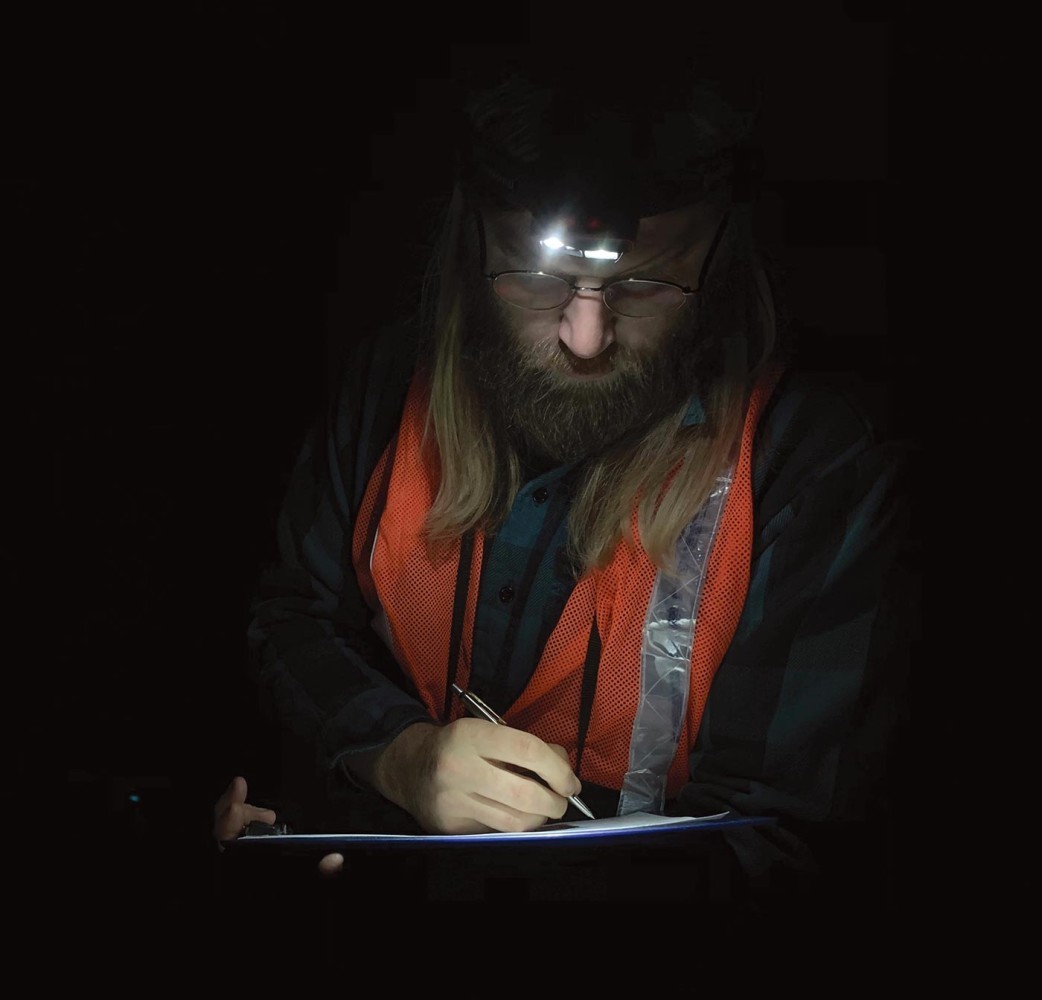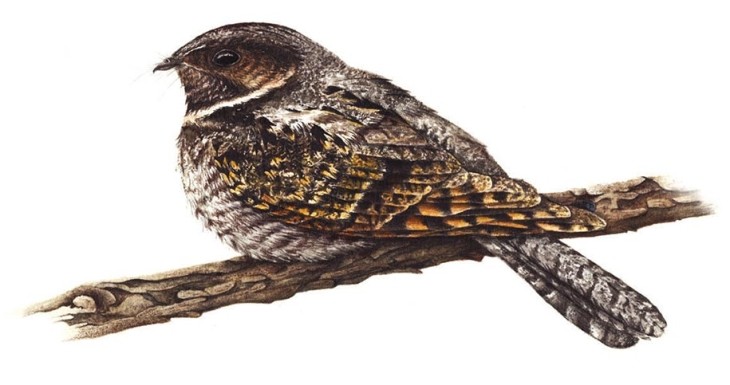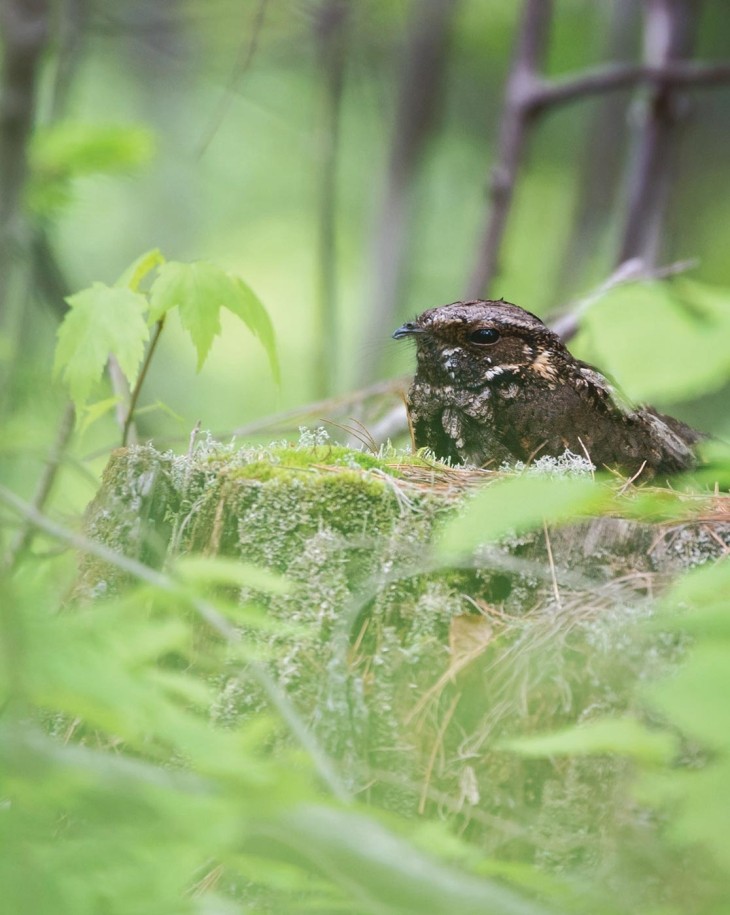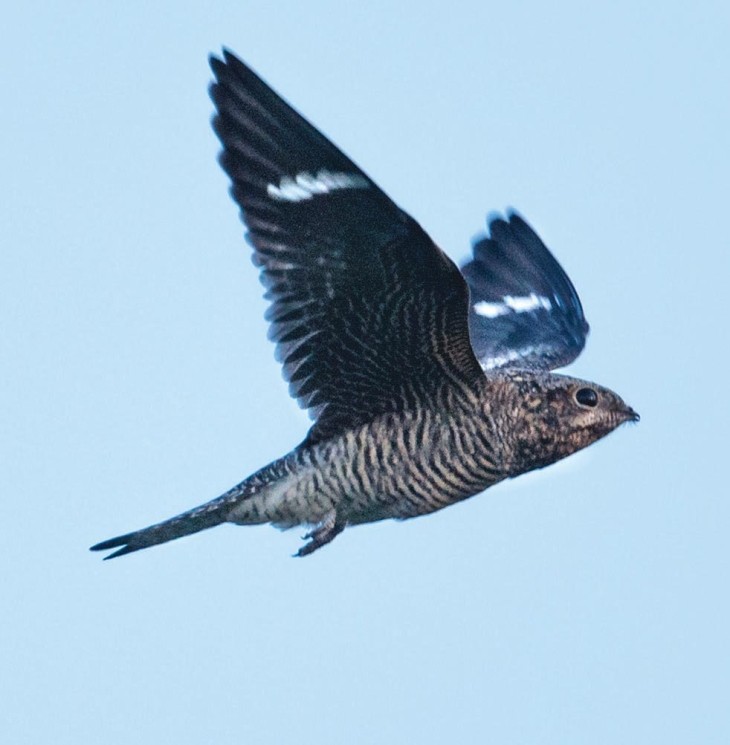I was 22 and volunteering with an amphibian monitoring project that summer. Standing along a roadway in the woods of Sumner, Maine – armed with a clipboard and a headlamp – I strained my ears for snoring pickerel frogs, plucking green frogs, and trilling American toads. Suddenly a strange chant arose from within the forest. “Whip-poor-will! Whip-poor-will! Whip-poor-will!...”
I was entranced. The entire drive back home I couldn’t stop thinking about this mysterious nightbird. I sat up late reading everything I could find. That was it. Life had taken a turn.
As I pored over my field guides and explored information on the internet, something became apparent: whip-poor-wills and many of their fellow nightjars had been undergoing widespread declines in recent decades. Across eastern North America, projects had sprung up to document the status of these tough-to-study birds. There was a project in nearly every New England state, with my home-state of Maine being one of the few exceptions.
That needed to change, I thought, but where to start?
I reached out to the Vermont Center for Ecostudies and signed up to participate in their nightjar project, taking responsibility for observing a route in West Haven, Vermont. Surveying the fields and forests of Ghost Hollow Road, I earned my nightjar-monitoring stripes. In the months that followed, I learned everything I could about coordinating such an effort from any and all experts. During the next several summers, I scoured the landscape for as many whip-poor-wills as I could find.
I started the Maine Nightjar Monitoring Project in 2017, the same year that I enrolled in graduate school at Unity College. My studies concentrated on bird monitoring and conservation with a particular focus on nightjars. My timing was good. In 2018, I was hired as an ecologist at the Maine Natural History Observatory (MNHO). That same year, the Maine Department of Inland Fisheries & Wildlife launched the second generation of the Maine Bird Atlas (2018–2022). By partnering with the Atlas, the nightjar project gained a corps of volunteers to help conduct surveys throughout Maine.
Nightjar species live on every continent (barring Antarctica), yet they are some of the most understudied and mysterious birds in the world. Their plumage is cryptic, meaning that these ground-nesting birds are well camouflaged to disappear into their surroundings, be that woodland, heathland, or desert. They are nearly all nocturnal insectivores and are equipped with massive mouths used to capture moths, beetles, and other flying insects. Their elusive nature and habit of singing after sunset has inspired a rich and poetic folklore throughout the world. One of the most enduring myths – perpetuated by Aristotle – was that nightjars used their large mouths to drink milk straight from a goat’s udder. This strange belief led this family of birds to be classified “Caprimulgidae,” or Goatsuckers.
The first bird to be called “nightjar” was the European nightjar – so named due to the jarring noise the birds made at night on their breeding grounds.
Maine serves as the summer breeding ground for two nightjars: the eastern whip-poor-will and the common nighthawk. The eastern whip-poor-will is a secretive bird of open-canopy woodlands, shrublands, young forests, and adjacent open country where they forage. Seldom seen, whip-poor-wills are more often heard singing their onomatopoeic songs at dusk, dawn, and on moonlit nights. Their nesting is closely tied with the lunar cycle. Egg laying and hatching is aligned with the full moon, a time when their insect prey is most easily captured.
Common nighthawks, by contrast, are a bit more conspicuous. Unlike whip-poor-wills, which hunt by sallying forth from perches, these birds continuously pursue insects in the open sky. Their bold, white-wing patches are easy to see as they dart to and fro giving raspy “peent” calls. At dusk, nighthawks perform aerial displays involving a nosedive from high in the air and ending in an up-swoop that produces a loud, rushing sound referred to as a “boom.” Unlike whip-poor-wills, which make their nests on the forest floor, nighthawks nest in open areas such as grasslands, barrens, and even on gravel rooftops in urban areas.
While there are only two nightjars known to breed in the Northeast, a third nightjar species has been observed in the region, including Maine, in recent years. The Chuck-will’s-widow is a stocky nightjar found in the southeastern United States. This nightjar has expanded its range northward and has been found in central Maine during the breeding season. Whether this species will one day be considered Maine’s third nightjar is yet unknown. However, I visited seemingly the same Chuck singing in the woods of Orland, Maine, during the last two consecutive summers (the males typically return to the same breeding territory). This is another bird whose onomatopoeic song we should all be keeping an ear out for.
Given their nocturnal habits and elusive nature, nightjars defy conventional bird-monitoring practices; specialized methods are required. This involves setting off into suitable habitat on nights when the sky is clear, the moon is illuminated, and the winds are low. Like most nightjar monitoring projects, in Maine we established a series of routes throughout the state made up of individual survey points. Volunteers run their routes once at sunset for nighthawks and again after moonrise for whip-poor-wills.
This past summer, I worked to confirm breeding whip-poor-wills as part of the Maine Bird Atlas. One calm evening, I traveled to a known hotspot and stationed myself along the road. Not long after dusk, a whip-poor-will began singing. I attentively listened as he patrolled and sang along the boundaries of his territory. After several minutes of listening, a sharp “quirt!” rang out from the roadside. I watched as the singing male halted his song and descended to the very spot from which the call emanated. This was very likely a pair.
I returned days later and carefully scanned the roadside. Roosting on a slumped birch was a male whip-poor-will with a female whip-poor-will on the ground beside him! Returning with my camera, I found one of the birds perched atop a decaying stump and held my breath while snapping some photos.
I was over the moon! Although I had heard many of these birds, I had rarely laid eyes upon them. I returned for a final visit several weeks later. Remarkably, after only a few minutes of scanning, a female whip-poor-will flushed from the duff and began performing a wing-fluttering distraction display. In doing so, she revealed two cream-colored eggs tinged with grays and browns. I retreated and left the pair to rear their young without disturbance for the rest of the season, and felt grateful to have just witnessed such a rare scene.
Eastern whip-poor-wills were once so common that their singing was synonymous with summer nights in eastern North America. While their song can still be heard occasionally, it has become increasingly rare. Aerial insectivores – birds that hunt on the wing – are undergoing widespread declines. Among aerial insectivores, nightjars are suffering some of the most pronounced declines. The reasons for these losses, like the birds, are elusive, but fit into the broader pattern of decreasing bird numbers throughout North America. Declining insect populations, habitat destruction, forest maturation, predation from free-ranging cats, and many other factors have been suggested as plausible contributors. It is likely that a combination of these and other drivers are leading to the decline of the whip-poor-will.
Climate change poses a serious threat to whip-poor-wills; based on future climate models, large swaths of their summer range (as much as 80 percent) are likely to become unsuitable for breeding. While common nighthawks are more numerous and widespread than whip-poor-wills, they have also suffered pronounced declines throughout North America, leading many organizations and agencies to prioritize this species for conservation as well.
The sudden and sweeping loss of our nightjars is a call to action. Monitoring is an essential component of any conservation program, and thanks to citizen scientists we are gathering the data needed to take the pulse of our nightjar populations.
In 2019, MNHO hosted the Northeastern Nightjar Roundtable Meeting. Representatives from throughout the United States and Canada came together to discuss their projects and to move toward more cohesive efforts to tackle the issues surrounding these fascinating and important birds. It was a huge step toward transcending the gap between monitoring and conservation on a continental scale.
When the meeting ended, I reflected back to that fateful night in the Maine woods, and how the song I heard that night changed my life.
Citizen science is an essential tool in conservation. It was through citizen science that I discovered my passion for nightjars and honed the skills needed to work on their behalf. Volunteers are powering this and thousands of other wildlife-monitoring efforts throughout the world. Like me, many individuals will discover their passion for conservation through these types of opportunities. Such projects can be beneficial for the participants, as well as for the wildlife they aim to protect.
Logan Parker is an ecologist with the Maine Natural History Observatory, and founder and director of the Maine Nightjar Monitoring Project.





